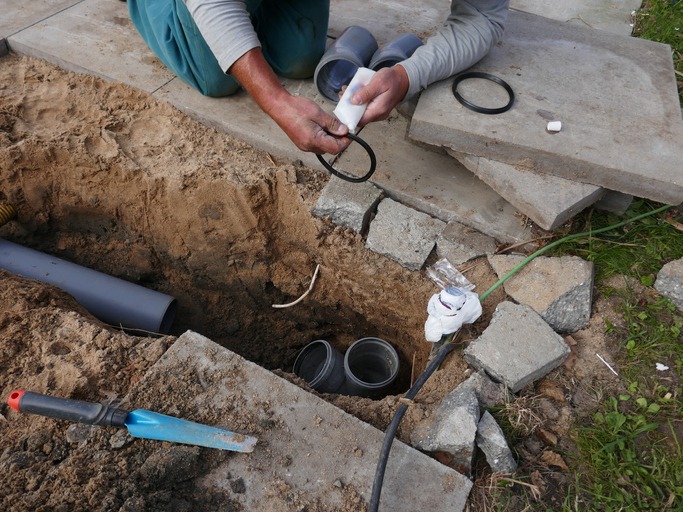Polybutylene (Poly B) plumbing, once considered an innovative and cost-effective piping material, has become notorious for its susceptibility to leaks, failures, and subsequent water damage. The use of Poly B plumbing in residential and commercial properties from the 1970s to the 1990s led to a wave of lawsuits and insurance claims due to extensive water damage and mould growth.
Delve into the history of Poly B plumbing, explore the reasons behind its failures, and discuss the impacts of Poly B plumbing lawsuits on homeowners and the construction industry and why Poly B replacement is so important.
Understanding Poly B Plumbing: A Brief History
Poly B plumbing gained popularity in the 1970s as an alternative to copper and galvanized steel pipes due to its low cost, ease of installation, and resistance to corrosion. Made of flexible polybutylene resin, the pipes were joined using barbed fittings and metal crimp rings. The combination of ease of installation and relatively low cost made it an attractive choice for builders and contractors, resulting in widespread use in North America.
Reasons for Poly B Plumbing Failures
Despite its initial popularity, Poly B plumbing began to show significant issues within a few decades of installation. Several factors contributed to its failure:
- Chemical Degradation: Exposure to chlorine and other chemicals in the water supply caused Poly B pipes to degrade over time, leading to brittleness and weakening of the material.
- Temperature Sensitivity: Poly B pipes were sensitive to temperature fluctuations, causing them to expand and contract with changes in the weather. This movement could lead to stress on the pipes and fittings, resulting in leaks and failures.
- Poor Fittings: The metal crimp rings used to connect the pipes were prone to corrosion, leading to leaks at the fittings. Additionally, improper installation practices further exacerbated the problem.
- Long-Term Water Exposure: Prolonged exposure to water and high water pressure could weaken the pipes, leading to burst pipes and water damage.
Impacts of Poly B Plumbing Lawsuits
The failure of Poly B plumbing resulted in extensive water damage in many homes and commercial properties. Mould growth, structural damage, and property loss were common consequences of leaks caused by Poly B plumbing failures. Homeowners faced substantial repair costs and, in some cases, had to relocate temporarily during remediation and repair work.
The emergence of Poly B plumbing lawsuits had far-reaching effects on homeowners, builders, and the construction industry as a whole:
- Increased Insurance Claims: Insurance companies faced a surge in claims related to Poly B plumbing failures. The scale of water damage and mould growth led to significant payouts, leading some insurance companies to exclude coverage for Poly B plumbing-related claims.
- Loss of Home Value: Homes with Poly B plumbing installations experienced a decrease in market value due to the stigma associated with the material. Homebuyers became wary of properties with Poly B plumbing, impacting the resale potential of affected homes.
- Costly Remediation and Replacements: Homeowners with Poly B plumbing faced the daunting task of replacing the entire plumbing system to prevent further damage. Remediation and replacement costs were substantial, often exceeding tens of thousands of dollars.
- Legal Battles and Class-Action Lawsuits: Class-action lawsuits were filed against manufacturers of Poly B plumbing and contractors involved in its installation. Legal battles and settlements further complicated the situation for homeowners and the construction industry.
- Transition to Safer Piping Materials: The Poly B plumbing debacle prompted a shift in the construction industry towards safer piping materials such as copper, PEX (cross-linked polyethylene), and CPVC (chlorinated polyvinyl chloride).
Conclusion
Poly B plumbing, once hailed as an innovative plumbing solution, has left a lasting impact on homeowners and the construction industry. The history of Poly B plumbing is a cautionary tale about the importance of thoroughly evaluating new building materials and their long-term performance. The failures and subsequent lawsuits underscore the significance of proper material selection, installation practices, and building codes to ensure the safety and durability of residential and commercial properties. For homeowners with Poly B plumbing, it is crucial to be proactive in identifying signs of deterioration, leaks, or water damage and to address these issues promptly. If you suspect that your property has Poly B plumbing, consult with a licensed plumber or building inspector to assess the condition of your plumbing system and inquire about Poly B replacement sooner rather than later.
As the construction industry continues to learn from the Poly B plumbing saga, the focus remains on providing safe, durable, and efficient plumbing solutions. Homeowners are encouraged to work with reputable builders and contractors who prioritize the use of high-quality piping materials and adhere to industry best practices to avoid potential plumbing pitfalls in the future. By learning from the past and embracing better construction practices, we can create homes that stand the test of time and provide homeowners with peace of mind and comfort for years to come.
